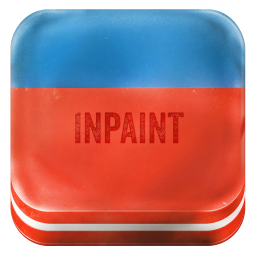Challenge description
- Http://mypaintonline.com
- Inpaint online, free
- Inpaint Online Remove Watermark
- Inpaint Online Remove Watermark
Theinpaint.com: visit the most interesting The Inpaint pages, well-liked by male users from India and USA, or check the rest of theinpaint.com data below.Theinpaint.com is a popular web project, safe and generally suitable for all ages. We found that English is the preferred language on The Inpaint pages. Today only, Giveaway of the Day has Inpaint 4.7 for Windows free of charge. Normally $19.99, this clever utility can quickly and easily remove date stamps, power lines, people, scratches,. Inpaint Online will automatically remove text from an image, but you'll have to pay for the service. If you're looking for a free option, Fotor allows you to use a cloning effect to remove areas of pictures. Pixlr is a free online watermark remover as well as a photo editing tool. It comes with a set of.
At $20, InPaint is a very affordable easy picture fixing solution, even more so when you can try the application for free first to see how you get on with it before you hand over the cash.
Http://mypaintonline.com

Inpaint online, free

Image inpainting, also known as image completion, is the process of filling-in the missing areas of an incomplete image so that the completed image is visually plausible. While this task is indispensable in many applications, such as dis-occlusion, object removal, error concealment, and so on, the task is still regarded very difficult thus far. Traditionally, several different approaches have been proposed for image inpainting, including partial differential equation-based inpainting, constrained texture synthesis, structure propagation, database-assisted, and so on.
Inpaint Online Remove Watermark
In recent years, deep learning has revolutionized the research of image inpainting, and a number of deep models have been designed. Nonetheless, the lack of a public, widely acknowledged dataset has been a significant issue in developing advanced, learning-based inpainting solution.
Inpaint Online Remove Watermark
This challenge is meant to consolidate research efforts about image inpainting using learning, especially deep learning approach. We will prepare two tracks: error concealment (EC) and object removal (OR). In the EC track, we simulate the case of transmission error that incurs missing areas (usually square blocks) in a decoded image. In the OR track, we carefully select some objects in an image to be removed, and produce missing areas with irregular shapes. In both tracks we challenge the researchers to inpaint the incomplete image. The major difference between the two tracks is that, in the first track, we want to recover the missing areas so that the completed image is similar to the original (although this can be very difficult!), and in the second track, we are satisfied as long as the completed image is visually plausible and pleasing.
We are aware of a previous competition in conjunction with ECCV 2018 [link], which also addresses the problem of image (and video) inpainting. Different from that competition, in our challenge we evaluate the quality of completed images by both objective metrics (PSNR, SSIM) and subjective evaluation (MOS).